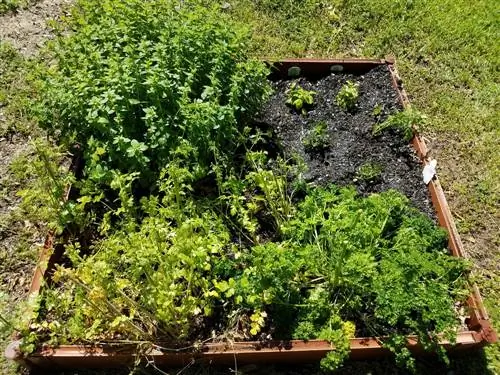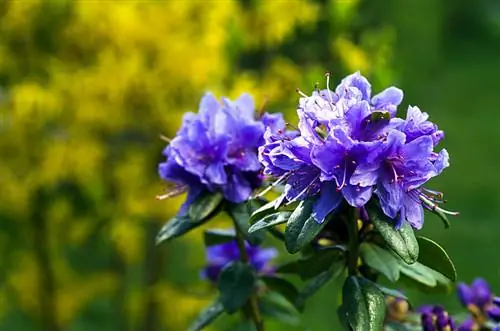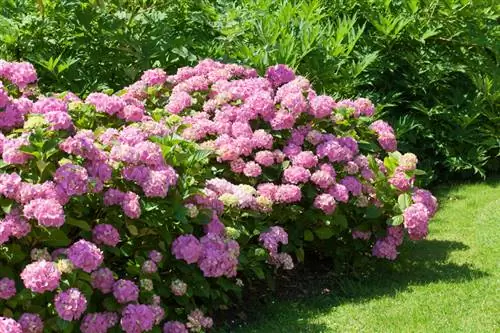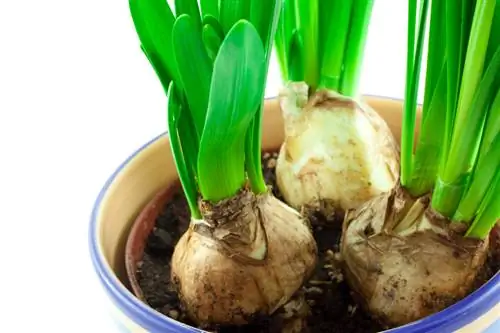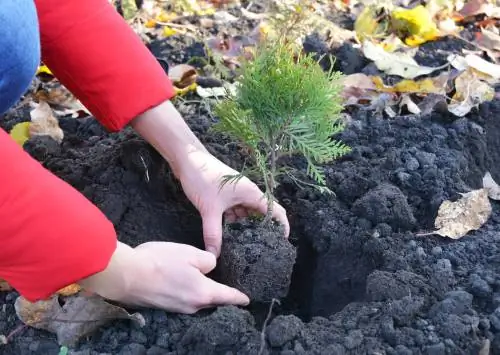- Author admin [email protected].
- Public 2023-12-16 16:46.
- Last modified 2025-06-01 06:02.
Spring awakens the desire for fresh herbs from your own garden. Now is the ideal planting time for aromatic basil, gorgeous lavender, spicy thyme and other taste buds. However, not all types of herbs go together. This guide explains how to skillfully plant garden herbs.
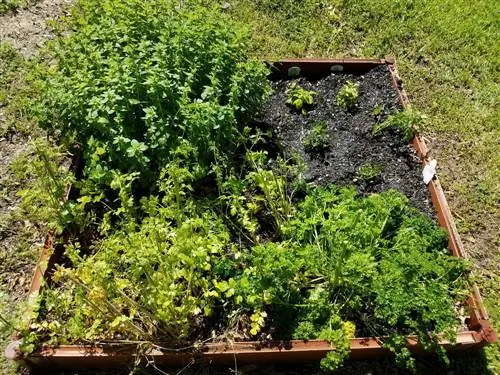
How do you plant garden herbs correctly?
Planting garden herbs correctly begins with choosing the right combinations, for example dill, chervil and marjoram or thyme, fennel and tarragon. Choose herbs suitable for each location and plant them in well-prepared soil after ground frost in May, whereby each root ball should have enough space.
Which herbs go together? - The dream teams in the herbal kingdom
There are suitable types of herbs for all lighting and soil conditions that gather together to form fragrant aroma islands. In the right combination, the plants support each other for a premium quality harvest. The following overview gives you proven dream teams from the realm of garden herbs:
- Annual herbs: dill, chervil, marjoram, garden cress, parsley
- Perennial herbs: savory, sage, oregano and lemon balm
- Herbs for pond banks: watercress, water mint, calamus
- Best herb friends: thyme, fennel, tarragon and coriander
The floral war footing is primarily thyme and marjoram. Good neighbors are a foreign word for wormwood, as this herb plant should be located away from other garden herbs. In contrast, lemon balm is considered the pacifist in the herbal kingdom because it can be integrated into any planting plan without hesitation. Spacious garden herbs tend to overgrow their neighbors. A solitary position therefore makes sense for lovage, laurel and hyssop.
Which location is suitable for garden herbs?
Adequate herbs are available for all lighting and soil conditions in the garden. Oregano, rosemary, sage, marjoram and lavender thrive in all their splendor in the sun-drenched rock garden with poor soil. Partially shaded, nutrient-rich locations are ideal for tarragon, parsley, chives, fennel and dill. If you create a forest garden, this is the refuge of wild garlic and woodruff.
What should you pay attention to when planting?
The growth of your garden herbs will be good from the start if you wait for the last ground frosts before planting. In early to mid-May, prepare the soil thoroughly by raking, weeding and raking in some sifted compost with sand. How to properly plant herbs in the garden bed:
- Dip the potted root balls into rainwater until no more air bubbles appear
- Dig small planting pits at a sufficient distance with 1.5 times the volume of the root ball
- Unpot the herb plant, place it in the middle of the soil up to the bottom pair of leaves
Press the soil with your hands and then water. Then adjust the water supply to the weather. Mediterranean herbs usually make do with normal rainfall. Thirsty species with large leaf volumes rely on regular watering on warm spring and summer days.
Tip
If you are creating a cottage garden, the center with the crossroads is the ideal location for a herb spiral. Specifically, it is a stone spiral with different zones. At the top is the Mediterranean zone for sun-loving herbs. The normal zone contains herbs for semi-shady locations. The wet zone is home to herbs with a preference for fresh, humus-rich soil. At the bottom, the water zone provides a home for thirsty herbs.

